Creating an Empathy Tool:
During the design sprint, my team and I started by creating an empathy tool for people who have partial hearing loss. When doing our research, we found that partial hearing loss is especially uncomfortable and can lead to mental disorders like dementia. We wanted to replicate this uncomfortable feeling. Initially, our design wanted to create full deafness in one ear. But we decided that it would be interesting to replicate different levels of deafness in each ear to show one way of how being partially deaf might feel.
Initial sketch design:
We used two tubes, one for each ear. In each tube, we filled it with different materials. For one ear, the tube was filled with bubble wrap. The other ear was filled with felt, and bubble wrap covered the opposite opening to where the ear would go.
Picture of materials in the tubes:
My father has partial hearing loss, and when it first started happening, he described it as pressure in the ear as well as not being able to hear well. It would constantly make him dizzy. The felt tube recreates the pressure in the ear, and the bubble wrap tube hinders the hearing a bit. Additionally, we designed the tubes to be sideways to manipulate the sound waves to add to the effect of partial hearing loss. We added a headband similar to how head phones work and a string to tighten the device to your ears.
Final Product:
Deliverables:
We were then asked to pair up with another team. My team pared up with the team creating an empathy tool for dexterity. Specifically, they designed a empathy tool for peripheral neuropathy which is a condition that causes weakness, numbness, and pain, usually in the hands and feet. (Mayo Clinic)
The empathy tool they created:
They created sandals that has different points of contact with the ground to make the wearer feel off balance. When using the sandals I felt really wobbly and it was very hard to stand up right. In order to rectify this, I created a sneaker that would help the balance and the weakness that people with peripheral neuropathy report that they feel.
I first started with the shoe sole. I remembered feeling of being unbalanced so I created support for the arch of the foot and the gap between the toes. I used layers of felt to create the shape of the sole and then put foam over the base for comfort. I attached three layers of cardboard at the bottom of the shoe for durability.
I then created the perimeter of the shoe out of cardboard for support of the user. After I enclosed the top of the shoe also with cardboard and added two braces on the side of the shoe to support the ankle.
Then I created the ankle cuff and connected the cuff to the brace part with yarn. Then I created the front brace to help straighten the users ankle. Given that the weakness can come and go, I made the front brace be able to activate and deactivate with a strap. If you take off the strap the brace will move so you can move your ankle comfortably. When you activate the brace and close the strap, the front part becomes unflexible to support the users weight.
The front brace unactivated:
The front brace activated:
I then added a string to the back of the ankle cuff to tighten and loosen for the user:
Final Product:
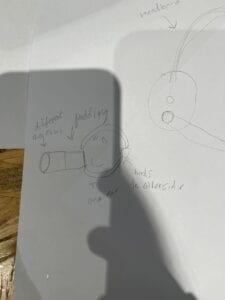
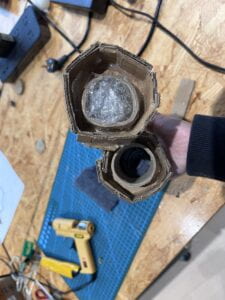
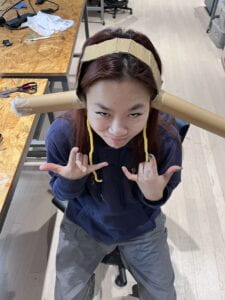
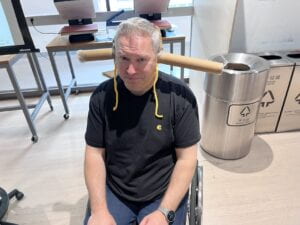
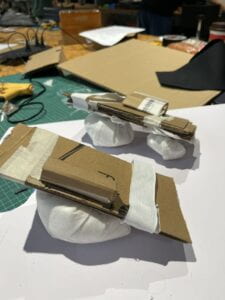
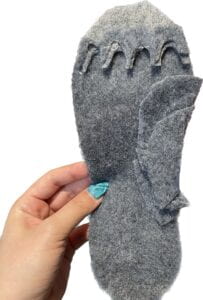
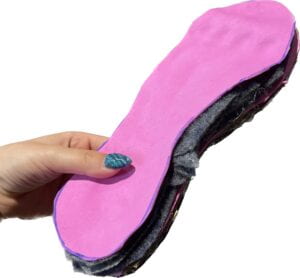
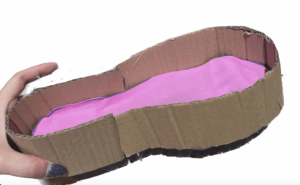
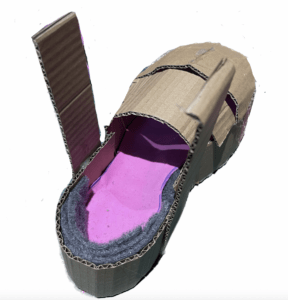
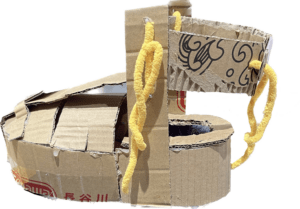
Leave a Reply